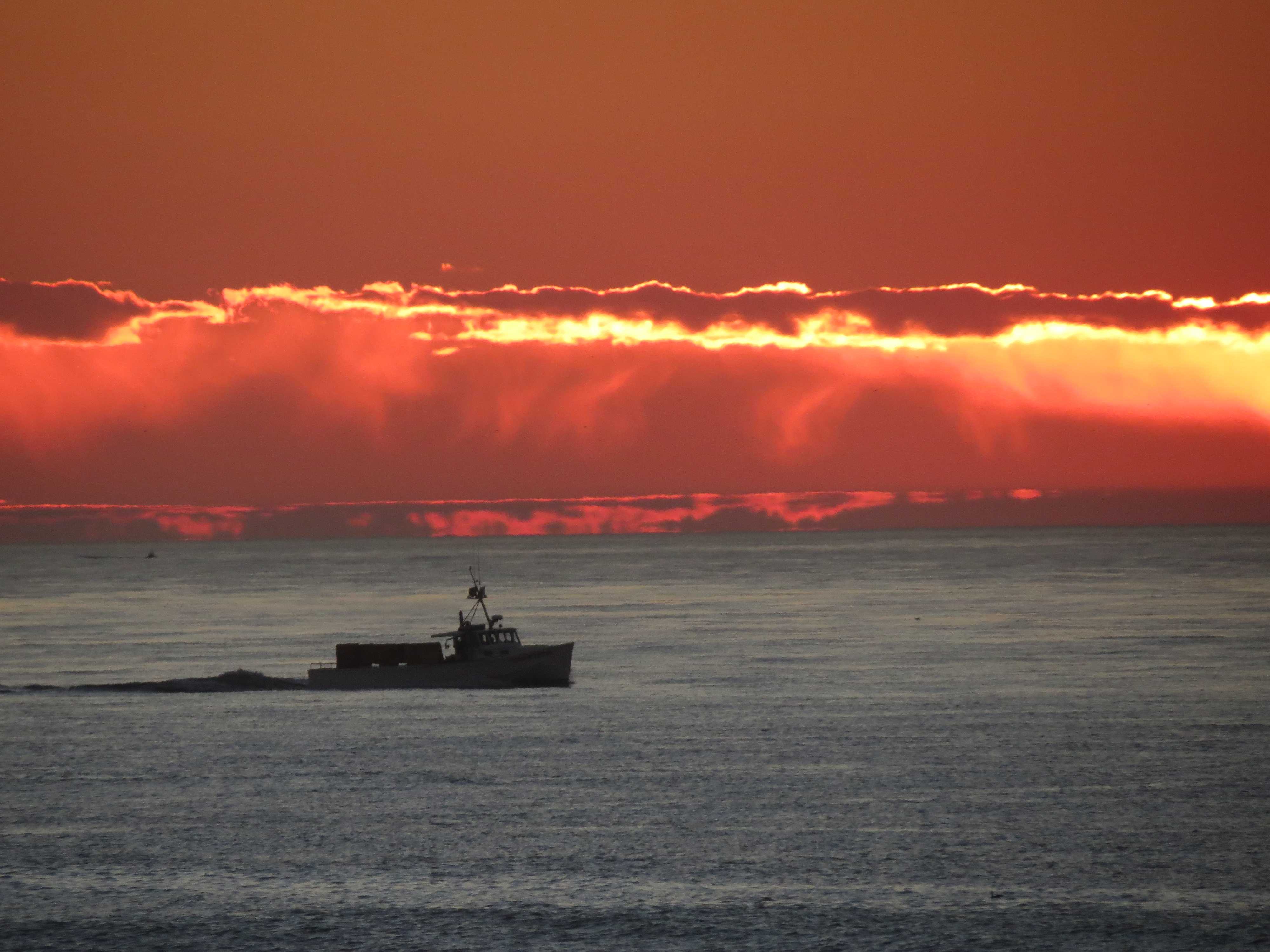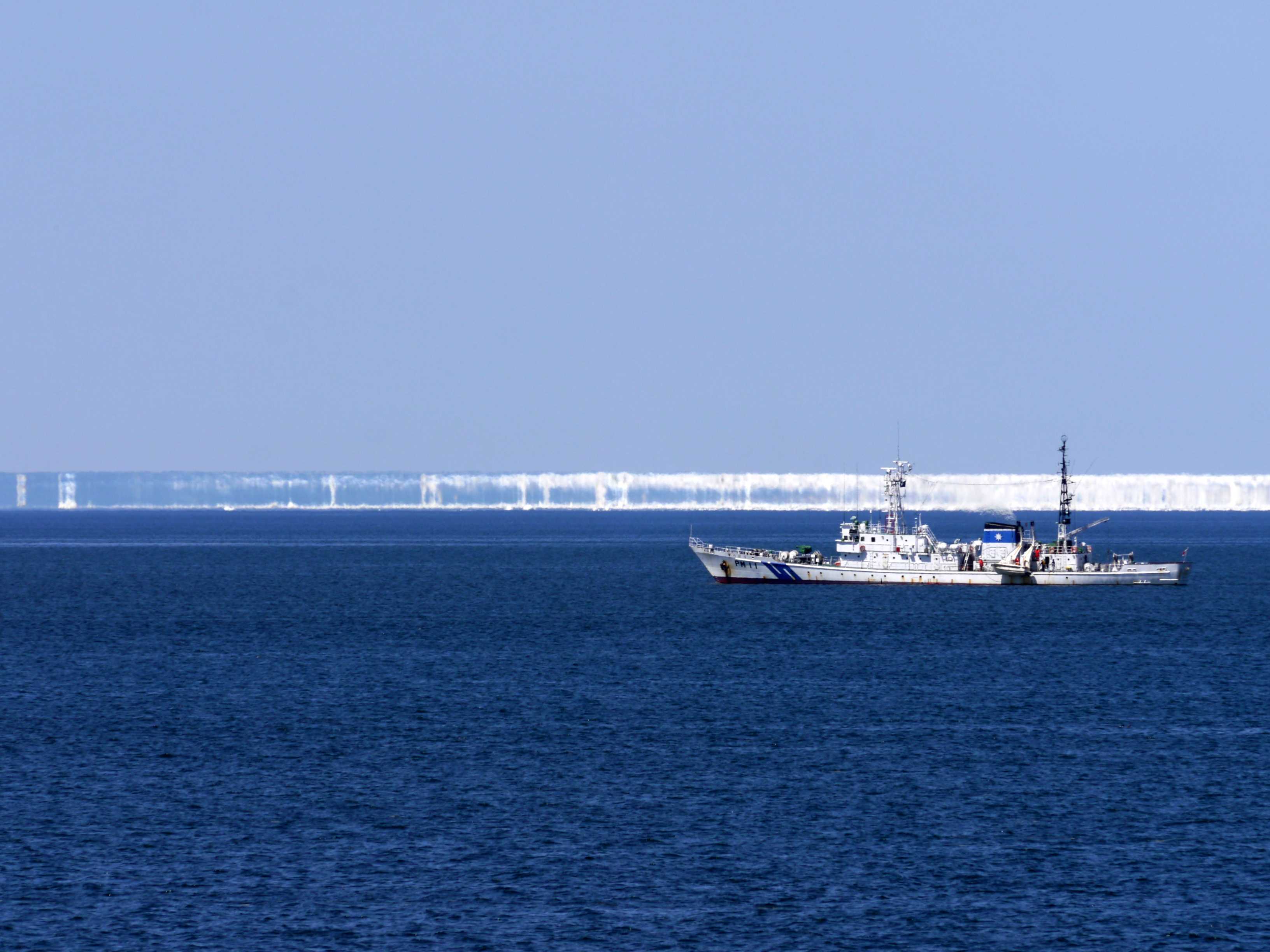© Mila Zinkova
San Francisco, California, United States of America
Latitude: 37° 45' 17'' N
Longitude: 122° 30' 38'' W
14 November 2012 1700 (Local Time)
Camera direction: towards WSW
Image P/S code: S.13.7.2
Image I.D.: 4659
-

Superior mirage of distant clouds
This photograph from San Francisco, California, USA shows a superior mirage of distant clouds on the horizon over the Pacific Ocean.
Mirages are caused by the curving of light rays through layers of air of differing temperature, density and, therefore, refractive index. A superior mirage is one where the mirage image appears higher than the true position of the object.
Mirages may be seen when the temperature of the Earth's surface differs greatly from the temperature of the air above. In this case, there is a layer of warmer air above colder air at the ocean’s surface.
Links in the image description will highlight features on the image. Mouse over the features for more detail.
© Mila ZinkovaSan Francisco, California, United States of AmericaLatitude: 37° 45' 17'' NLongitude: 122° 30' 38'' W14 November 2012 1700 (Local Time)Camera direction: towards WSWImage P/S code: S.13.7.2Image I.D.: 4659Superior mirage of sea ice
A mirage is an optical phenomenon consisting mainly of images of distant objects. These may be steady or wavering, single or multiple, upright or inverted, vertically enlarged or reduced. They result from the curving of light rays passing through layers of air with changing refractive index because of differences in temperature and therefore in density. Thus, they are observed when the temperature of the Earth's surface differs greatly from the temperature of the air above.
A mirage may occur as a lower mirage (inferior mirage) over intensely heated water surfaces, soils, beaches, roads, etc., or as an upper mirage (superior mirage) over cold surfaces such as snowfields, cold water and ice.
This picture shows an upper mirage, or superior mirage, of sea ice over a cold ocean surface. Warmer, less dense air overlies cold dense air at the sea surface. The terms “upper” and “superior” are applied to the name because in this type of mirage, light from an object is bent downwards towards the observer, making objects appear higher than their true positions.
Links in the image description will highlight features on the image. Mouse over the features for more detail.
© Tomoko SatohIkushinakita, Shari, Shari District, Hokkaido Prefecture, JapanLatitude: 43° 55' 5'' NLongitude: 144° 42' 3'' E29 April 2014 1218 (Local Time)Camera direction: towards NImage P/S code: P.13.7Image I.D.: 4662
